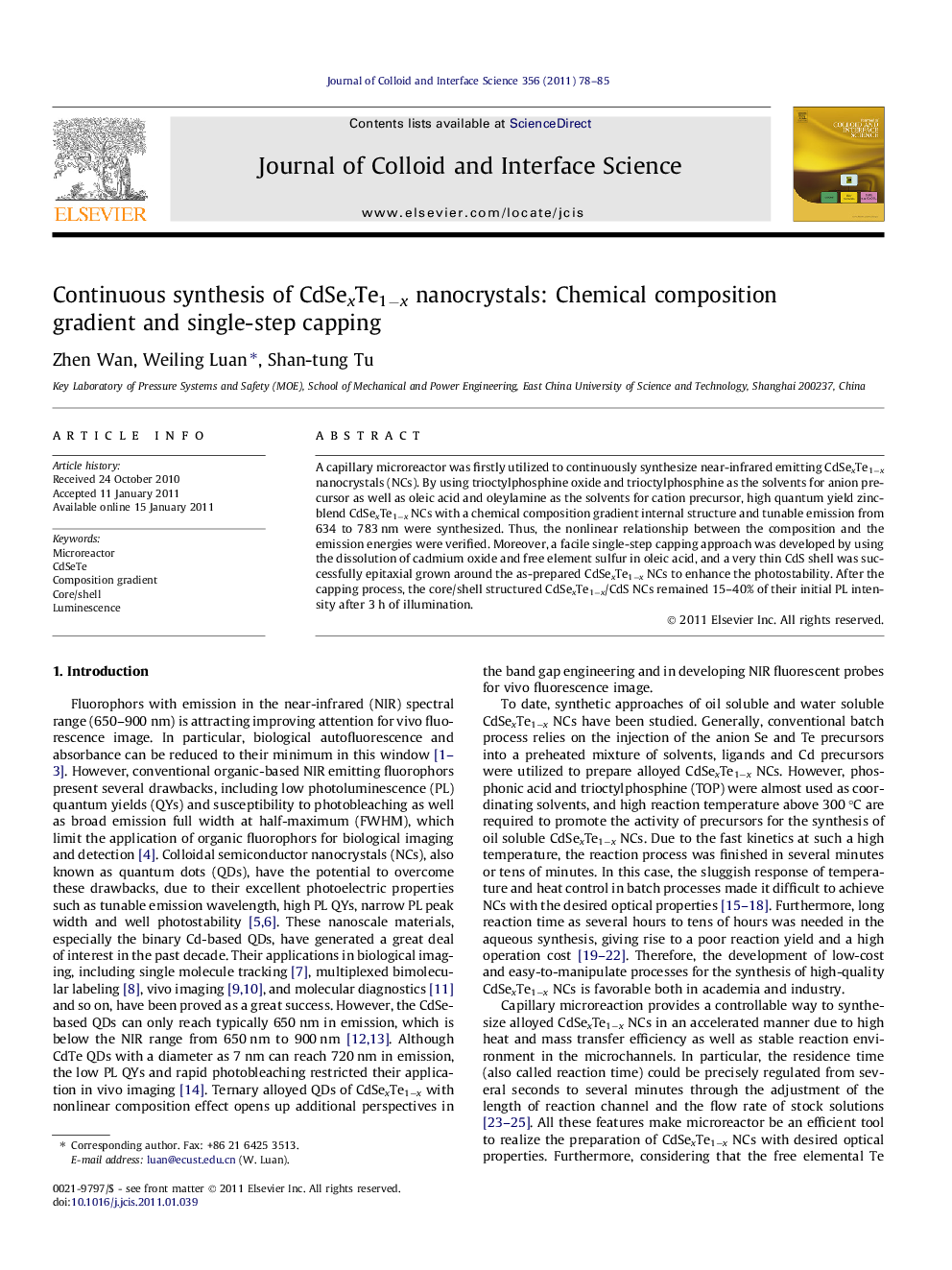| Article ID | Journal | Published Year | Pages | File Type |
|---|---|---|---|---|
| 608705 | Journal of Colloid and Interface Science | 2011 | 8 Pages |
A capillary microreactor was firstly utilized to continuously synthesize near-infrared emitting CdSexTe1−x nanocrystals (NCs). By using trioctylphosphine oxide and trioctylphosphine as the solvents for anion precursor as well as oleic acid and oleylamine as the solvents for cation precursor, high quantum yield zinc-blend CdSexTe1−x NCs with a chemical composition gradient internal structure and tunable emission from 634 to 783 nm were synthesized. Thus, the nonlinear relationship between the composition and the emission energies were verified. Moreover, a facile single-step capping approach was developed by using the dissolution of cadmium oxide and free element sulfur in oleic acid, and a very thin CdS shell was successfully epitaxial grown around the as-prepared CdSexTe1−x NCs to enhance the photostability. After the capping process, the core/shell structured CdSexTe1−x/CdS NCs remained 15–40% of their initial PL intensity after 3 h of illumination.
Graphical abstractCdSexTe1−x nanocrystals with composition gradient structure and tunable emission (634–783 nm) were synthesized via microreaction. For improving the photostability, a single-step process was developed to realize the CdS capping.Figure optionsDownload full-size imageDownload high-quality image (49 K)Download as PowerPoint slideResearch highlights► CdSeTe nanocrystals were prepared via capillary microreactor in a controllable way. ► The emission wavelength can be tuned from 634 to 783 nm. ► The quantum yields was up to 81%. ► The chemical composition gradient structure (Te-rich in core) was validated. ► A single-step CdS capping process was developed to improve the photostability.
